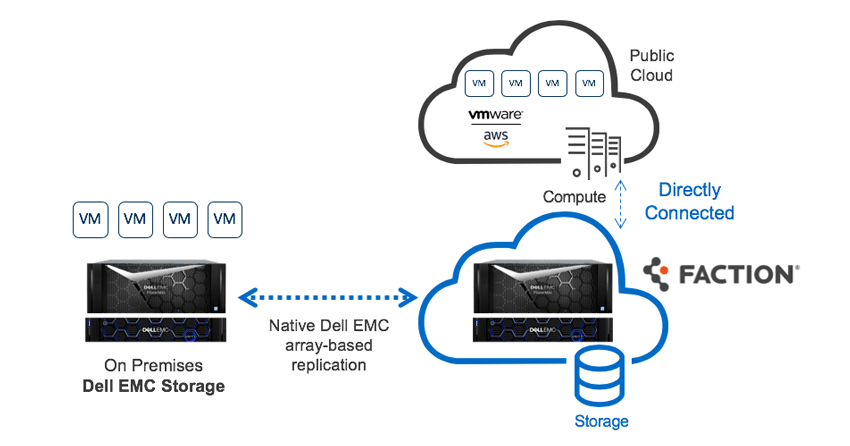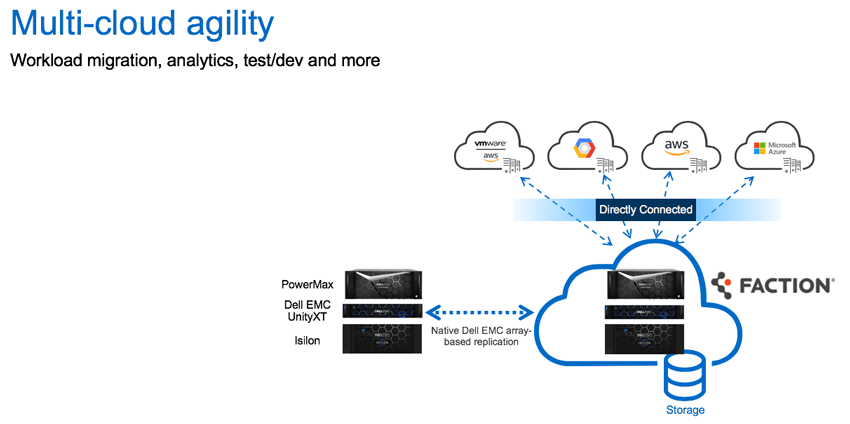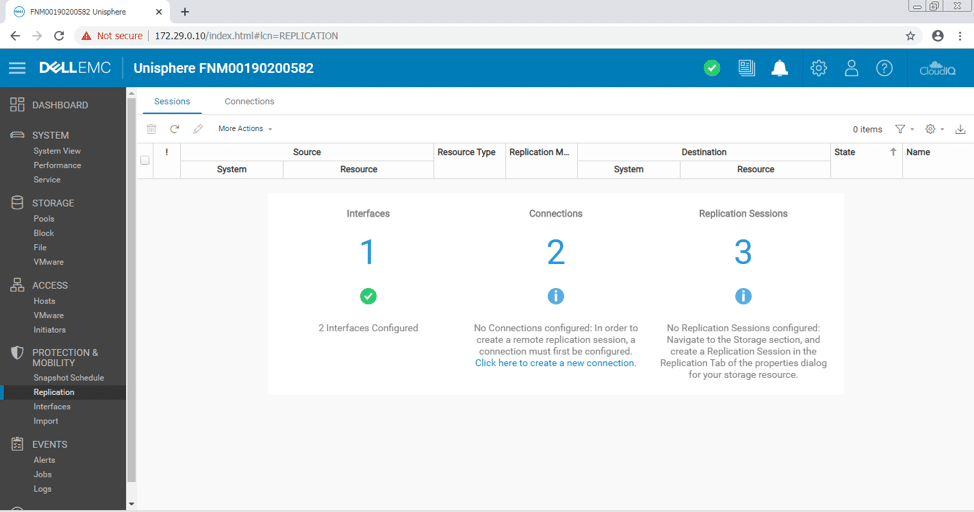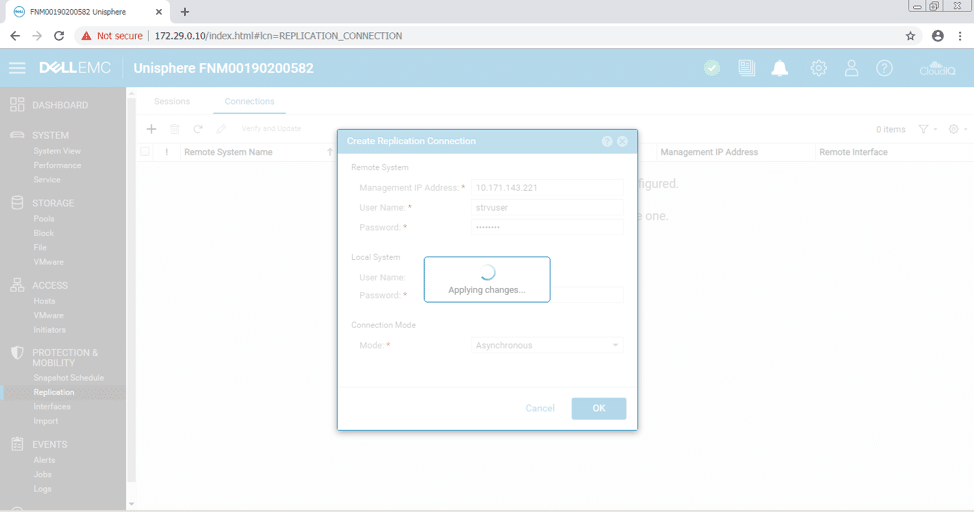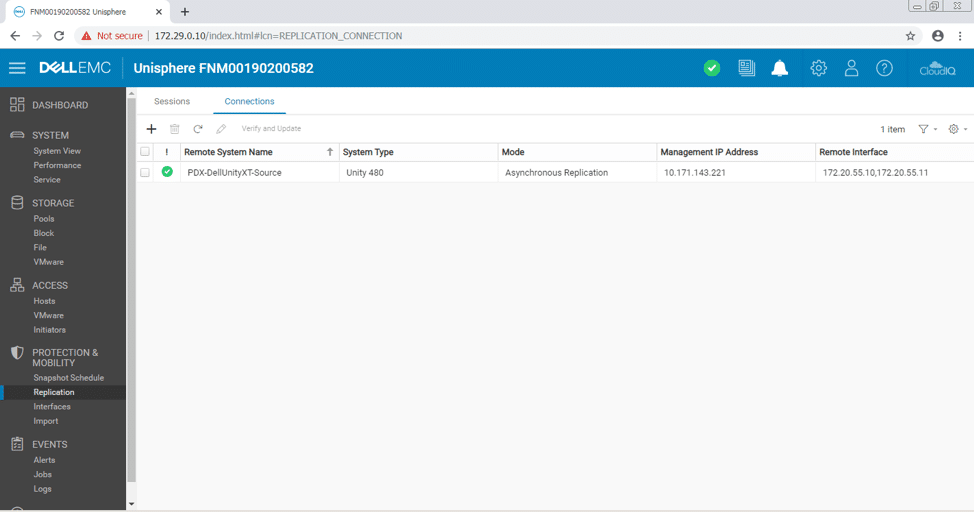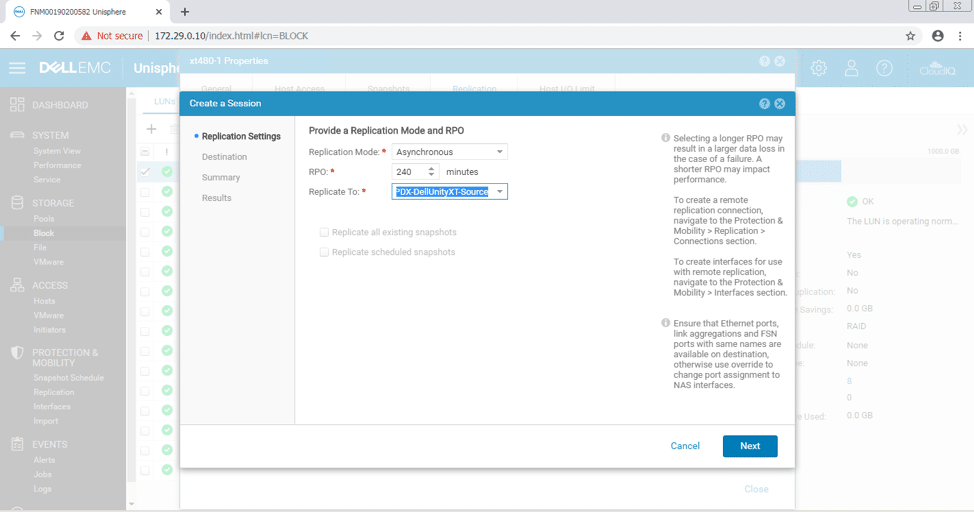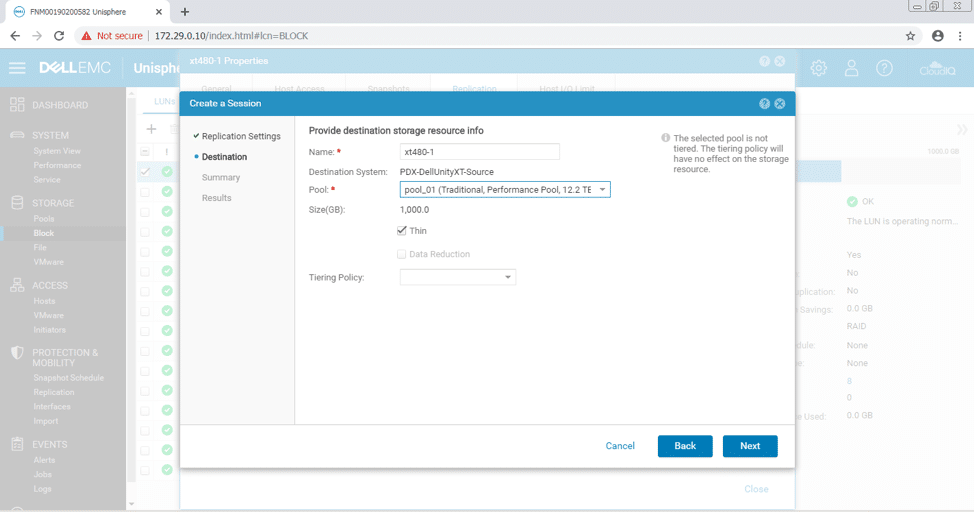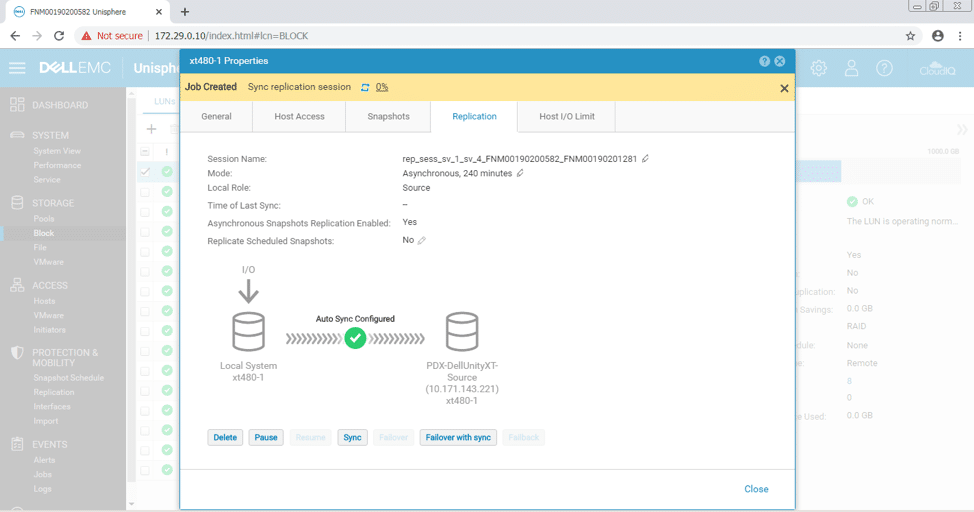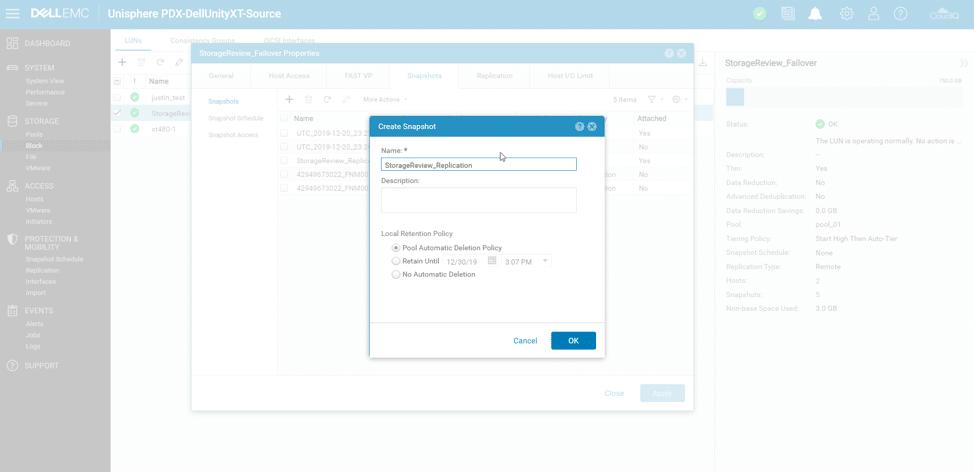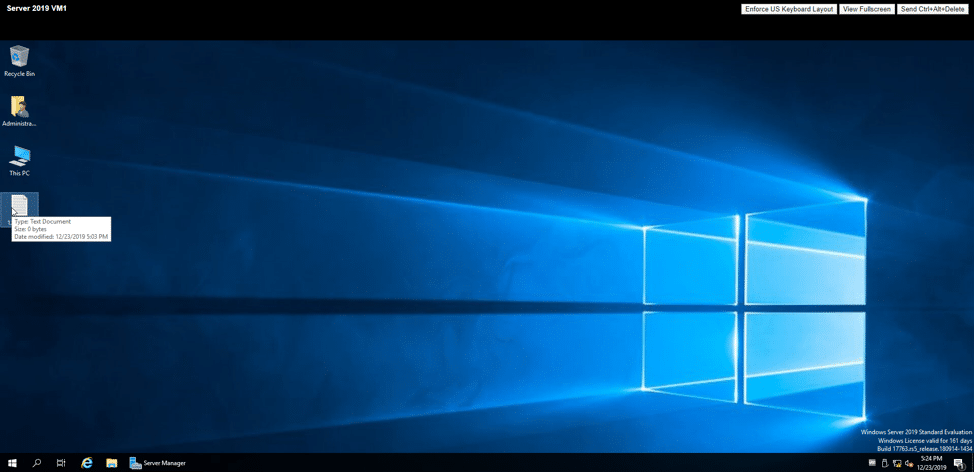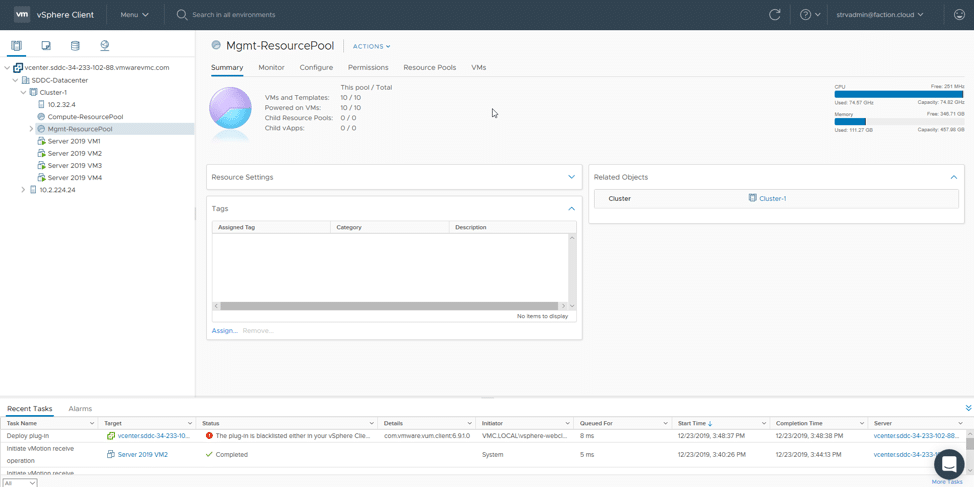
As every business grows, information and data grow as well. With this abundance of data (now considered a primary and permanent asset), an unforeseen disaster could potentially bring the organization to a break, causing significant operational and financial damage due to downtime. As a result, every organization should have an exhaustive disaster recovery (DR) and business continuity (BC) solution in place. While there are a variety of mechanisms to architect a DR strategy, they are often cumbersome, expensive and potentially unreliable. Dell Technologies has partnered with Faction to offer Dell EMC Cloud Storage Services, which provides disaster recovery as a service (DRaaS) offering designed to address these legacy DR concerns.
Traditional DR and BC plans have involved replicating data and applications on-premises to a DR site using several technologies and strategies available. This method means that the organization is often responsible for managing and operating its own DR solution, including a duplicate-systems infrastructure. However, the cost of the equipment and tools used in a DR site are high, along with the management and operation to maintain the entire IT environment. A poorly designed solution usually ends up affecting Recovery Time Objectives (RTOs) and Recovery Point Objectives (RPOs), due to high latency and/or improper configuration of network and other infrastructure.
The public cloud has long been a popular destination for those who want a DR site, without the physical management requirement. Cloud providers provide the backbone of DR in the cloud, but on their own, do little to help organizations lay out a comprehensive plan. Those organizations that want multi-cloud see the complexity of DR strategies rocket significantly higher. Additionally, moving data among these platforms and from on-premises is not an easy job. Here is where Dell EMC Cloud Storage Services comes into play. By extending Dell EMC storage and Faction management services and technology, this service allows the creation of an ecosystem that is more consistent and easier to implement DR strategies. Faction uses its Cloud Control Volumes, which can be connected to cloud providers at a layer 2 interconnection. Cloud Control Volumes create a much easier starting point for getting enterprise data into a central location to continue a consistent strategy around DR.
Faction Cloud Control Volumes are powered by Dell EMC storage, using platforms like Dell EMC Unity XT, Dell EMC Isilon, and Dell EMC PowerMax, depending on the customer need. This unique solution provides customers with persistent cloud-attached storage with a flexible-tiered design to optimize costs based on performance needs.
Faction/Dell EMC Multi-Cloud Architecture
Faction’s Hybrid DRaaS is directly connected to VMware Cloud on AWS via proprietary, patented network connectivity with less than 3-millisecond latency. This service makes it easier and more affordable to achieve lower RPOs and RTOs with an on-demand failover and recovery process to a VMware consistent and familiar target site. This solution ultimately combines best-in-class storage from Dell EMC, compute from VMware Cloud on AWS and services from Faction.
Faction/Dell EMC Hybrid DRaaS Reference Architecture
Process Overview
To get a better understanding of the joint Dell Technologies and Faction solution, we put the solution to work. We configured our Dell EMC Unity XT 480F, located in the StorageReview lab in Cincinnati, Ohio, to replicate to a Dell EMC Unity XT 480 in a Faction datacenter located in Reston, Virginia. Reston was selected due to proximity to Ohio. Faction’s datacenters sit very near the datacenters of the cloud provider locations they support. While more are coming online, the current offerings include Portland, Reston, Santa Clara, London and Frankfurt.
Dell EMC Unity XT 480F
To connect our Dell EMC Unity XT 480F to the Faction datacenter, we leveraged an IPSEC VPN tunnel. The management IP for our Dell EMC Unity XT, as well as its Ethernet connection, were routed through our VPN, so both arrays could securely pair across public IP link. This process was nearly painless with the help of Faction, who walked us through creating the correct subnets to be compatible with their side. Faction has the skills necessary to walk companies through this process regardless of their overall comfort level.
During this process, we focused on replication and failover scenarios, specific to the DRaaS offering. With the local and replication target Dell EMC Unity XT platforms in place, we can easily replicate our existing LUN to the Faction Cloud and implement both source and destination snapshot schedules to add extra protection.
Configuration of the Dell EMC Unity XT 480F is performed through Dell EMC Unisphere. After configuring the network interfaces, we can proceed to the configuration of the connection. What follows are the steps documented as we go through this process in real time. Under Protection & Mobility, first, we go to Replication.
From the two tabs on the top, we click on Connections. We create a replication connection selecting the Add icon. On the Create Replication Connection window, we specify the IP address and associated user authentication credentials to connect to the remote system, as well as the credentials of the local user account. Here, we also need to select the connection mode for the replication; in this case, we use asynchronous.
After the connection is validated with the remote site, our new connection will appear under Connection.
Now we move to the Storage area of the menu. Under Block, we select the storage resource to replicate and navigate to the Configure Replication tab and create a new session. The first step is to specify the replication settings, including Replication Mode, RPO, and the platform to replicate.
In Destination, we need to provide the destination storage resource.
After the session is created, we can monitor the replication job of the storage resource from their properties and sync our replication sessions.
Replication is just half the story when looking at the Dell EMC and Faction story. In a perfect world, you never have to worry about equipment or infrastructure failure. Obviously, that doesn’t always work out in the real world, so eventually most companies need to work through a failure of some sort. When it came time to create our failure situation, on Christmas Eve no less, we set up a call and declared our datacenter was down.
The first step down the path to data recovery is creating a snapshot of the volume on the recovery target and to mount it as a LUN with read/write permissions inside the Faction Bloc. These steps are handled by the Faction team. With the LUN attached, it is scanned by the Faction hosts, and mounted into ESXi, retaining the existing datastore signature. Next, the VMs inside that datastore are registered into the Faction environment.
Below is a desktop screenshot where we see our Windows Server VM running with a text file timestamp from just before our declared disaster.
Once the VMs are imported into the Faction ESXi environment, they are powered on and hot vMotion’d into the VMC SDDC without any disruption, allowing for quick failover times. The hybrid link between the Faction ESXi datacenter and the AWS SDDC allows this process to operate smoothly and enable the VMs to be powered up before needing to have their data moved into the AWS environment. These are migrated to Faction CCVs (Cloud Control Volumes) that are NFS Datastores mounted directly to the Faction Bloc and SDDC in AWS for a seamless and quick migration. The replicated LUN and CCVs reside on the same Storage Array so a Storage vMotion goes from the LUN mounted via iSCSi to the NFS datastore.
Conclusion
This DRaaS offering from “Dell EMC Cloud Storage Services: Disaster Recovery as a Service” ultimately combines storage from Dell EMC, compute from VMware Cloud on AWS, and services from Faction to create a best-in-class solution. The key word here is, in fact, “solution.” DR is often looked at as a necessary evil by IT departments, as it’s generally very expensive, requires more management overhead and when called upon, doesn’t always work. Faction has a well-defined process to eliminate most of these headaches for Dell EMC customers.
In our case, to validate the efficacy of the DRaaS solution, we configured an all-flash Dell EMC Unity XT 480F in our Cincinnati lab. Through secure IP connection, we replicated the storage to Faction’s datacenter in Virginia, which sits nearby the AWS cloud location that would ultimately host our VMware VMs. After validating successful completion of replications, we worked through the failure process with Faction, declaring a datacenter failure. Faction went to task, and mounted a snapshot of our most recent replication, registered the VMs inside their ESXi environment and hot vMotion’d them into the AWS SDDC. Even better, we had to do almost nothing to bring all of this effort to bear.
Disaster recovery doesn’t have to be cumbersome and complicated. Faction has done an excellent job integrating with Dell EMC Storage and VMware Cloud on AWS. The solution is flexible and simple to use, without giving up on robust enterprise requirements. In the end, we validated that when our primary site succumbed to failure, Faction and Dell Technologies had the DR site operational within our 15 minute RTO. For the enterprise that wants a DR solution that works without all of the headaches, DRaaS by Dell EMC Cloud Storage Services is a clear winner.
More Information Available from Dell EMC
Engage with StorageReview
Newsletter | YouTube | Podcast iTunes/Spotify | Instagram | Twitter | Facebook | RSS Feed
This report is sponsored by Dell EMC. All views and opinions expressed in this report are based on our unbiased view of the product(s) under consideration.

